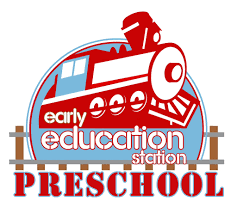Which is Not Considered an Additional Cost Beyond Tuition for Higher education?

Higher education is a significant investment, both in terms of time and money. While tuition fees often take center stage in discussions about college expenses, there are numerous other costs associated with pursuing a degree. However, what expenses are genuinely “additional,” and which ones are commonly misconstrued as such? Dive in as we demystify the costs beyond tuition in higher education.
Understanding Tuition Fees:
Tuition is the primary fee students pay to receive instruction at a higher education institution. It is the ticket price for attending classes and accessing the core academic services. However, tuition does not cover everything, and that is where many students and parents get caught off guard.
Common Additional Costs:
- Books and Supplies: From textbooks to lab equipment, the materials required for courses can add up.
- Housing and Meals: Whether it is on-campus dorms or an off-campus apartment, living expenses are a significant factor.
- Transportation: Commuting to and from campus or traveling home during breaks incurs costs.
- Personal Expenses: From toiletries to entertainment, daily living has its costs.
- Health Insurance: Some colleges require students to have health insurance, leading to additional fees if the student does not already have coverage.
Misconceptions about “Additional Costs”:
While the above are genuine additional costs, there are misconceptions about what counts as an extra expense. For instance:
- Tuition Fees: Ironically, while we are discussing costs beyond tuition, it is essential to note that tuition itself is sometimes misconceived as an “additional” cost. It is the primary cost, and everything else is supplementary.
Why It Matters:
Understanding the full spectrum of college expenses is crucial for several reasons:
- Budgeting: Knowing all potential costs helps students and families create a realistic budget.
- Financial Aid: A comprehensive view of expenses can influence the amount of financial aid a student might seek.
- Value Assessment: By understanding all costs, students can better assess the value of their education in relation to its total cost.
It Does Not Make Sense to Avoid Post-Secondary Education Because of Its Cost Since, in the Long Run:
Post-secondary education is an investment in one’s future. While the upfront costs might seem daunting, the long-term benefits often outweigh these expenses. Graduates typically earn higher salaries, have more stable employment, and access better job opportunities than those without a degree. Moreover, the personal growth, networking opportunities, and life experiences gained during these years are invaluable.
What Type of Federal Funding is Free Money But is Based on Financial Need Only?
Grants, especially the Federal Pell Grant, are types of federal funding that do not need to be repaid. They are essentially “free money” for students. However, they are awarded based on financial need, determined by the information provided in the FAFSA.
All of the Following is True About the Free Application for Federal Student Aid (FAFSA) Except:
The FAFSA is a crucial form for students seeking financial aid. It determines eligibility for federal grants, loans, and work-study programs. However, many myths surround the FAFSA. For instance, some believe that only low-income students qualify, which is not true. Financial aid is available for various income levels.
What are the Benefits of Attending a Local Community College?
Local community colleges offer numerous advantages. They are typically more affordable than four-year institutions, allowing students to save on tuition. They offer flexible schedules, catering to working students and those with families. Moreover, they provide a smoother transition to higher education for those unsure about a four-year commitment.
Which of the Following is Not True About the Free Application for Federal Student Aid (FAFSA)?
While the FAFSA is essential for federal aid, it is also used by states, colleges, and private organizations to determine financial aid offers. It is a misconception that the FAFSA is only for federal aid.
What Has the Biggest Impact on Whether a 4-Year University is Affordable?
Several factors determine a university’s affordability. However, the most significant is often financial aid availability. Scholarships, grants, and in-state tuition can drastically reduce costs, making a seemingly expensive university much more affordable.
Which of These Additional Costs Will Most Likely Be the Most Expensive?
Housing and meals often top the list of additional costs. Whether it is on-campus dorms or off-campus apartments, living expenses can quickly add up, especially in cities with a high cost of living.
Also Read: Peter Zeihan: A Deep Dive into His Education and Career
Conclusion:
Higher education is more than just tuition. By recognizing and preparing for all potential costs, students can make informed decisions about their education and avoid unexpected financial surprises. Remember, knowledge is power, and understanding the financial landscape of higher education is the first step toward a successful academic journey.





